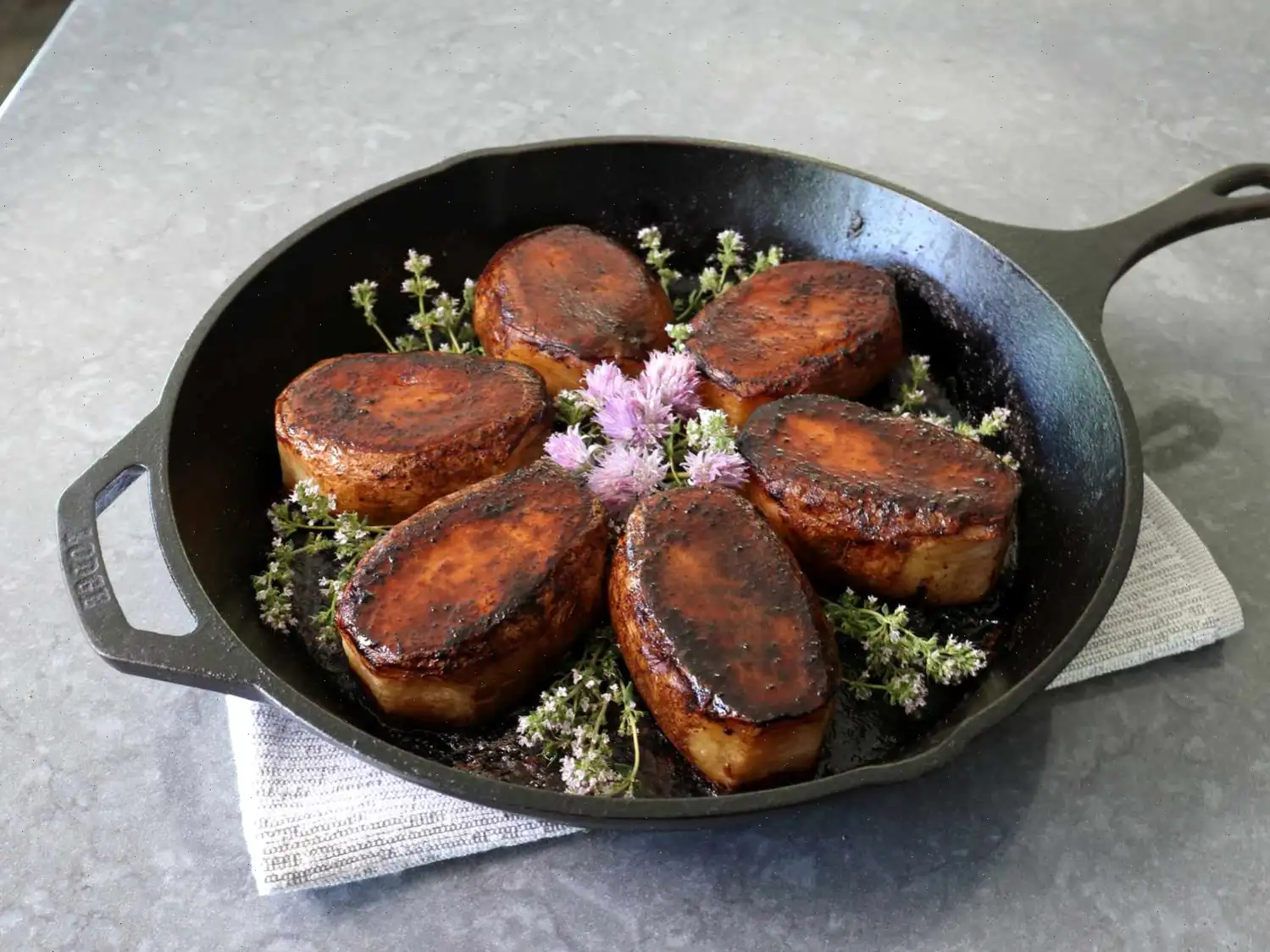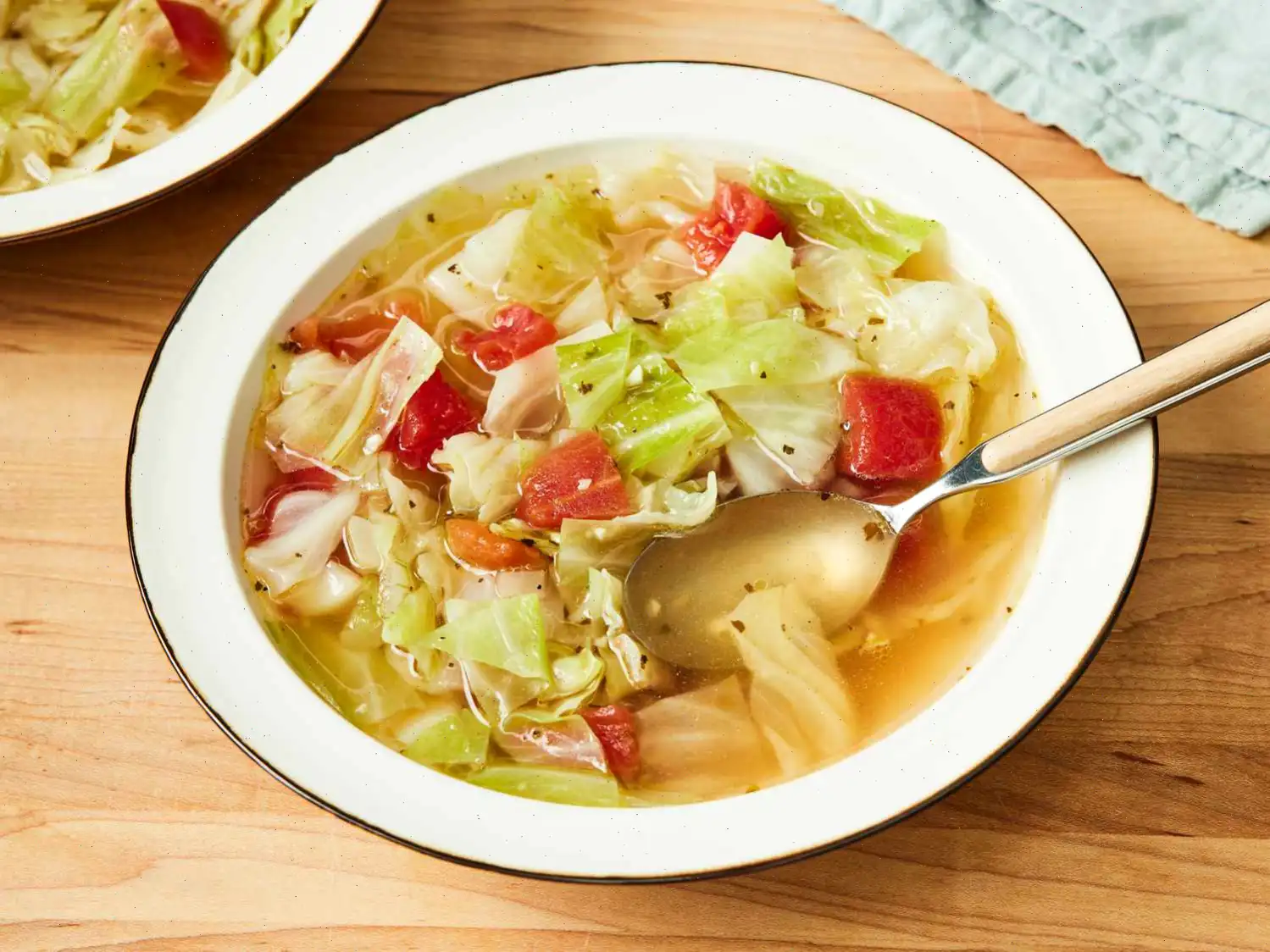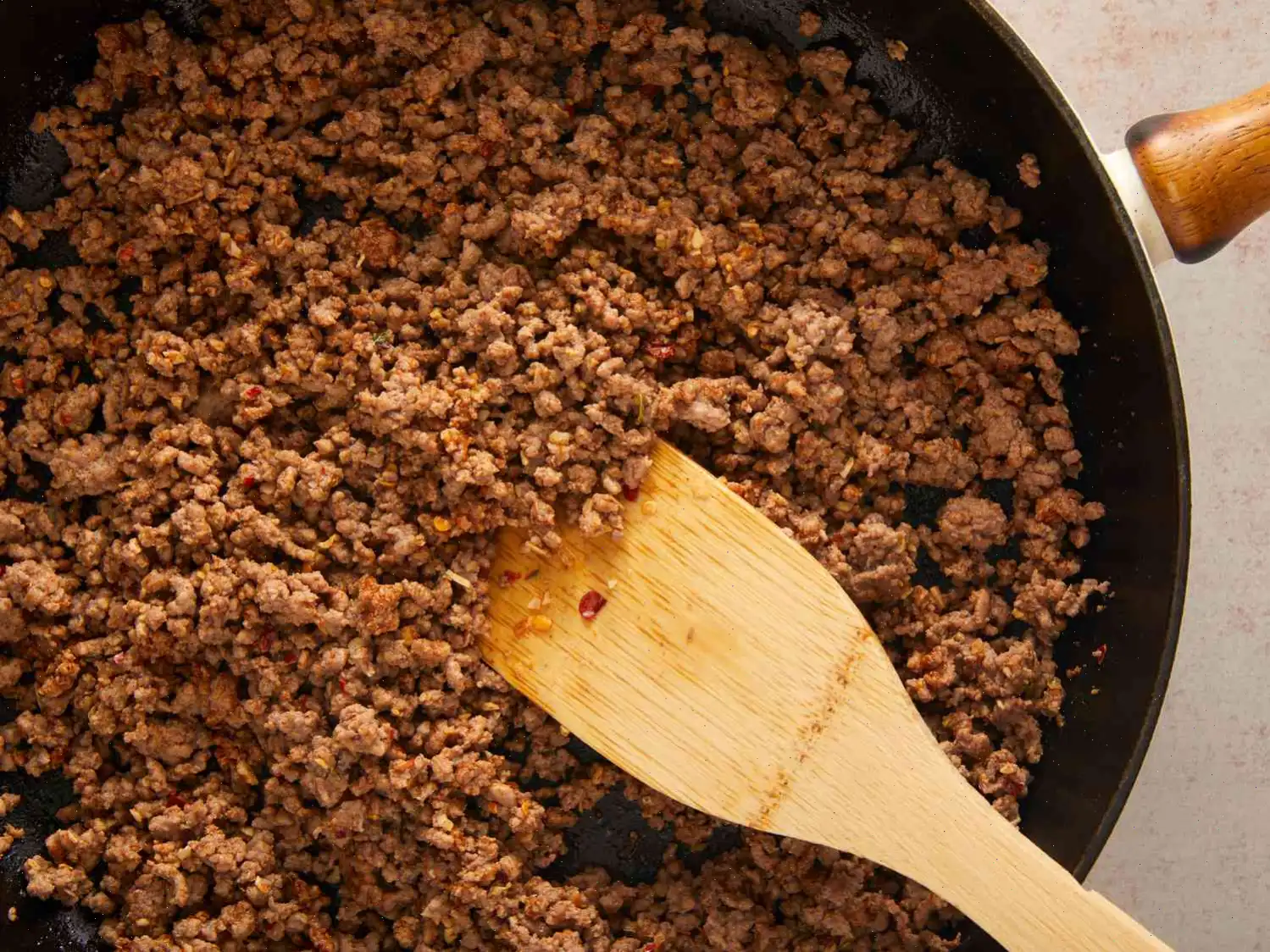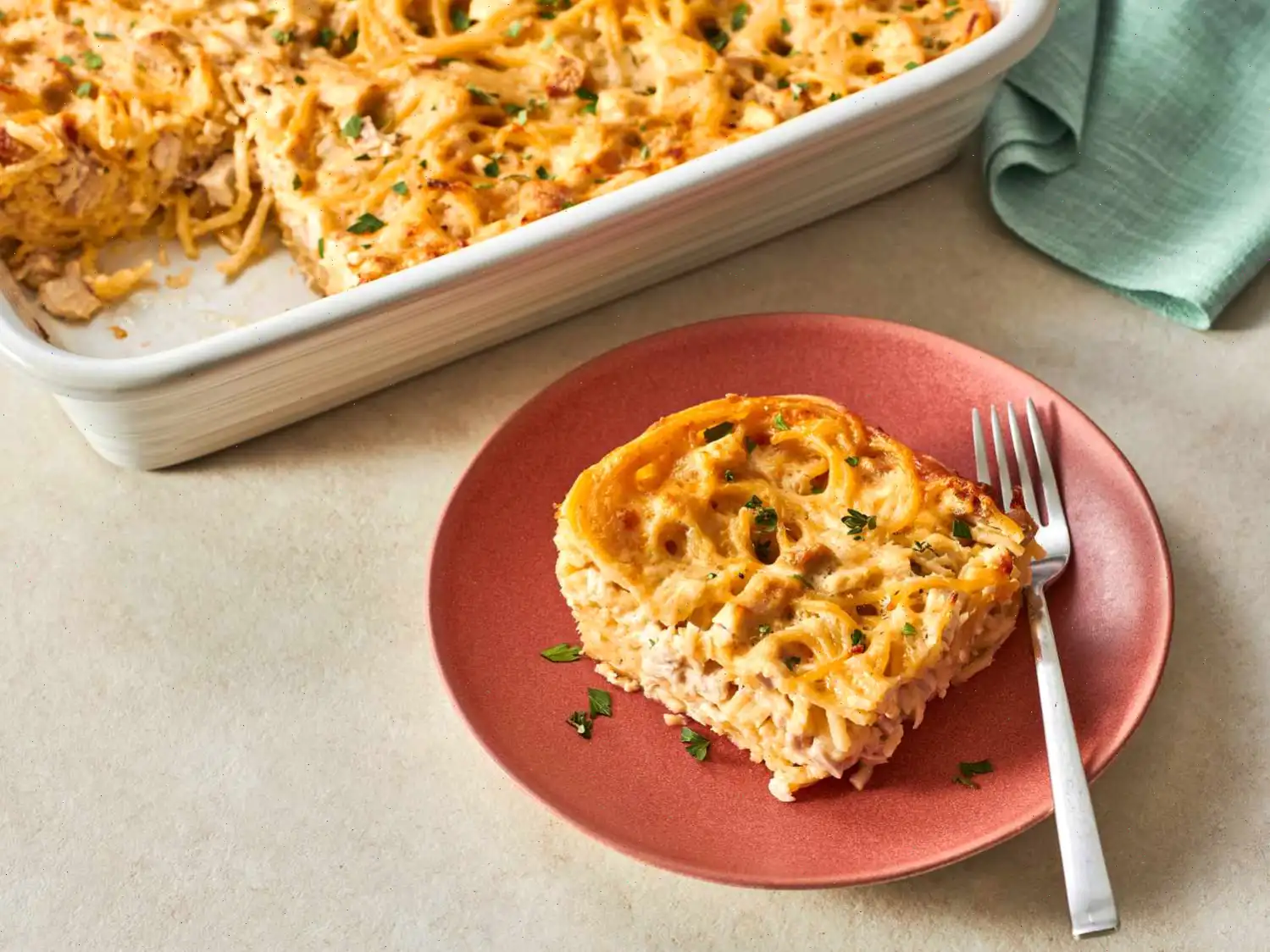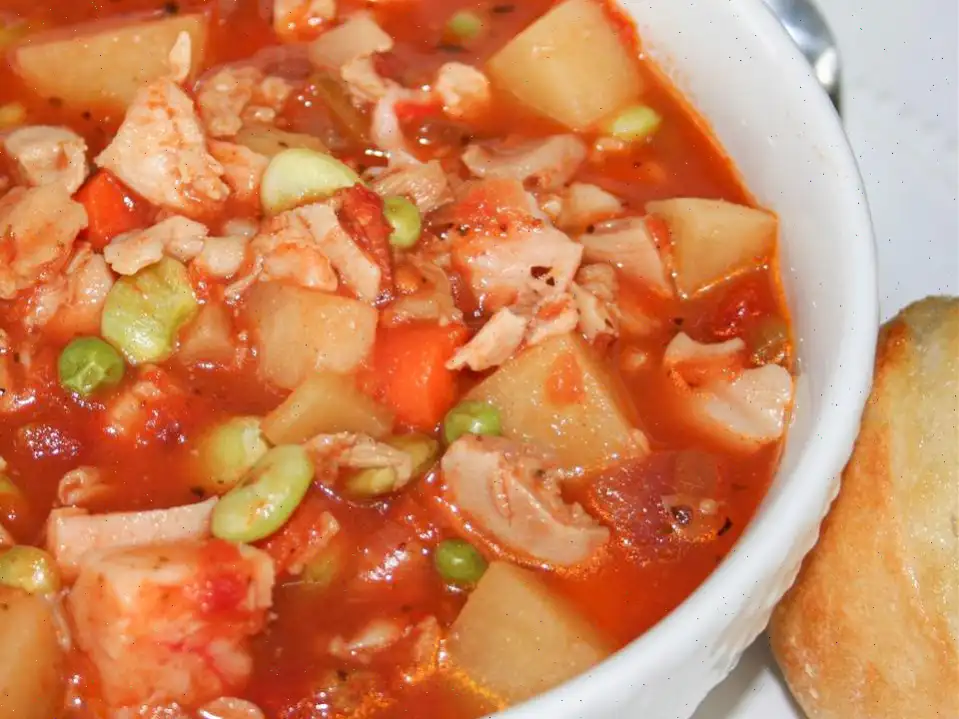
Ham and Egg Noodles (Schinkennudeln) Recipe
Ingredients
- 6 ounces dried broad noodles or egg noodles
- 2 eggs
- 2 tablespoons heavy cream
- 1 tablespoon water
- 2 tablespoons butter
- 4 ounces canned ham, such as SPAM, or Black Forest Ham, cut into small dice
- 1/2 white onion, finely diced
- Freshly ground black pepper to taste
- 1 tablespoon chopped fresh parsley, or to taste
Directions
- Fill a large pot with lightly salted water and bring it to a rolling boil. Stir in the noodles and return to a boil. Cook the pasta uncovered, stirring occasionally, until it is tender yet firm to the bite, about 7 to 9 minutes. Reserve approximately 1/8 cup of the pasta water and set it aside.
- In a bowl, add the eggs, heavy cream, and water. Whisk to combine, then season with freshly ground black pepper.
- In a large skillet, heat the butter over medium heat. Add the ham and cook it until it is lightly browned, about 3 minutes.
- Next, add the diced onion to the skillet and cook until the onion becomes translucent, about 5 minutes more.
- Stir the cooked noodles into the skillet with the ham and onion mixture.
- Pour the egg mixture into the skillet and stir until the eggs are set, about 2-3 minutes. The eggs should form a creamy texture that coats the noodles.
- Transfer the dish to a plate, sprinkle with fresh parsley, and serve immediately. Enjoy!
Nutrition Facts (per serving)
| Nutrition | Amount | % Daily Value |
|---|---|---|
| Calories | 523 | |
| Total Fat | 38g | 49% |
| Saturated Fat | 18g | 90% |
| Cholesterol | 275mg | 92% |
| Sodium | 955mg | 42% |
| Total Carbohydrate | 28g | 10% |
| Dietary Fiber | 2g | 6% |
| Total Sugars | 2g | |
| Protein | 18g | 36% |
| Vitamin C | 4mg | 4% |
| Calcium | 62mg | 5% |
| Iron | 3mg | 15% |
| Potassium | 406mg | 9% |
The Story and Culture Behind Ham and Egg Noodles (Schinkennudeln)
Ham and Egg Noodles, or Schinkennudeln in German, are a comforting and versatile dish with roots tracing back to the traditional kitchens of Germany. This dish emerged as a hearty, quick-to-prepare meal for busy households, particularly in regions where eggs and cured meats like Black Forest ham were readily available. Its simplicity and reliance on staple ingredients made it a popular choice for everyday meals, bridging the gap between rustic home cooking and festive family dinners.
Regional Variations
While Schinkennudeln is widely associated with central Germany, subtle regional variations exist. In Bavaria, for instance, the dish often features smoked ham and a slightly richer egg-cream mixture, while in northern regions, local spices and a lighter butter sauce are preferred. Some areas incorporate a touch of nutmeg or mustard for added depth, reflecting local culinary traditions. Despite these differences, the core conceptegg-enriched noodles with savory hamremains constant.
Comparison with Similar Dishes
Schinkennudeln bears resemblance to Italian carbonara due to its use of eggs to create a creamy sauce. However, unlike carbonara, it rarely includes Parmesan cheese and uses ham instead of pancetta or guanciale. Its flavor is milder and slightly sweeter, reflecting the German palate. Compared to other noodle dishes, it emphasizes simplicity and comfort over complex seasoning, making it distinctively homely and approachable.
Where Schinkennudeln is Served
This dish is commonly served as a side or a light main course in German homes, especially for lunch or dinner. It can also appear in traditional beer gardens and casual family restaurants, often accompanied by a simple green salad or pickled vegetables. During festivals and local gatherings, it may be presented as part of a larger buffet of hearty German dishes.
Interesting Facts
- Schinkennudeln was historically a practical meal for farm families, using leftover ham from Sunday roasts.
- The dishs simplicity allows for creative adaptations, such as adding mushrooms, leeks, or even a touch of cream cheese.
- It is a common recipe passed down through generations, reflecting regional tastes and family traditions.
- Despite its humble origins, it has gained popularity in modern German cuisine as a quick and satisfying comfort food.
- The combination of ham, butter, and eggs provides a rich flavor profile that is both filling and flavorful, yet surprisingly easy to prepare.
Overall, Ham and Egg Noodles exemplify the German talent for creating hearty, flavorful dishes from simple ingredients. Its enduring popularity lies in its ability to deliver comfort, tradition, and versatility in every bite.



